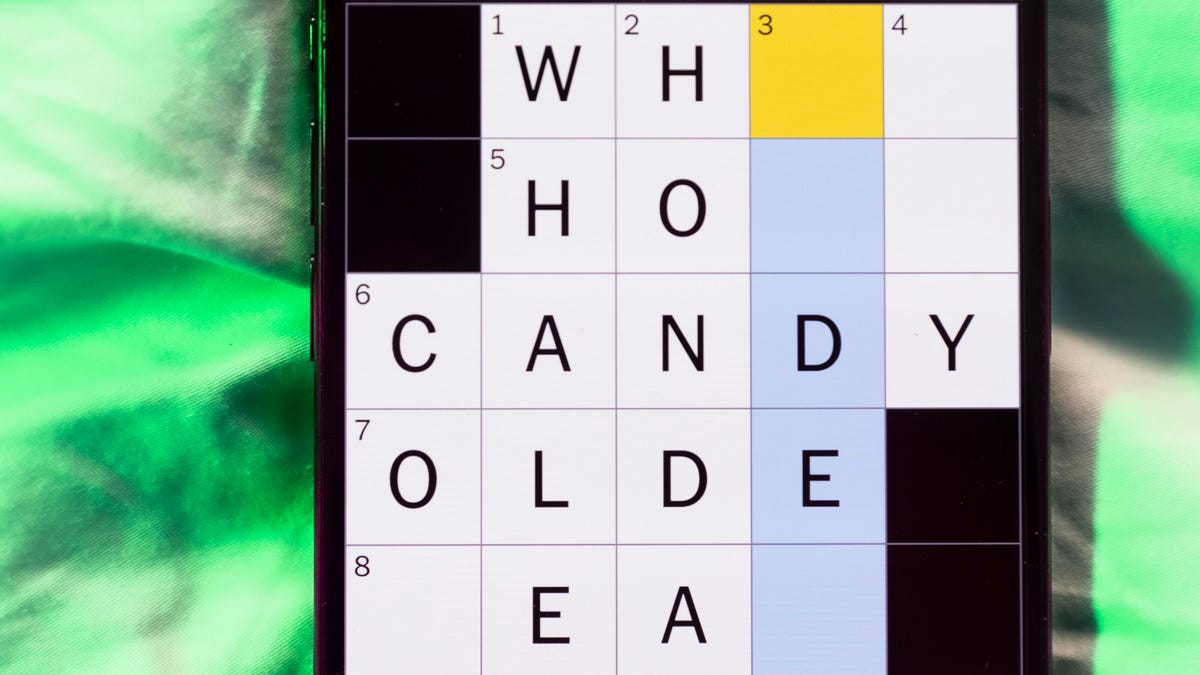Technologies
My First Look at T-Mobile’s Unique Starlink T-Satellite Service Made Me Head Far From Home
Even 120 miles from town in a cellular dead zone, I was able to stay in contact with my family using the $10-a-month T-Satellite service. And I didn’t need to be on a T-Mobile plan or buy a new phone to do it. Here’s a hands-on report from the woods.

Is T-Mobile’s new T-Satellite service worth $10 a month to be able to text from almost anywhere outside cellular coverage areas? The Starlink-based satellite service can be a convenience if you’re camping or hiking remote areas, but also a communications lifeline for people who don’t have regular cellular access or need emergency aid.
To test it out, though, I had to find a cellular dead zone. T-Mobile estimates there are 500,000 square miles in the US with no cell coverage, so I left my home in Seattle to find one. After three hours of driving to the wooded North Cascades, I got my chance to see if satellite texting is as easy as everyday cellular texting, and how T-Satellite differs from other satellite services.
How T-Satellite differs from other satellite services
Satellite texting is now a big deal: The wireless providers and phone-makers, including Apple, are betting satellite connectivity is the answer for travelers and people who live in remote areas (and even those impacted by emergencies such as the massive flooding in Texas).
It also isn’t new. Apple started offering SOS communication backed by Globalstar on the iPhone 14. And later, that allowed emergency texting when you’re outside coverage areas — a literal lifesaver for people injured, lost or stranded in remote areas. The feature also allowed you to share your location via satellite in the Find My app. Apple then expanded the service to include any texting using the Messages app, as well as calling for roadside assistance. CNET’s David Lumb used Messages via satellite on his iPhone 15 Pro to text friends and share his thoughts when he summited Mount Haleakalā’s peak in Hawaii.
Google has a similar feature in its Pixel 9 phones, except the Pixel 9A, which works with satellite provider Skylo. Samsung Galaxy phones, like the recently released Galaxy Z Fold 7 and Z Flip 7, can use Verizon for satellite texting and to contact emergency services through Skylo, too.
However, that communication involves a few steps to activate the feature. You need to be outdoors with a clear view of the sky — no trees or buildings — and point your phone at a passing satellite, keeping it steady to maintain the connection.
With T-Satellite, the experience is quite different. Texting is almost indistinguishable from when you’re within cellular coverage. On a Samsung Galaxy S25 Ultra with a T-Mobile plan, opening the Messages app showed the phone already connected to satellite, with a banner reading «You’re messaging by satellite.» A small satellite icon appears in the menu bar with radiating curves to indicate the status of the connection.
This is due in part to the fact that there are now more than 650 Starlink satellites overhead providing wider coverage, but also because they use a frequency band compatible with most phones sold in the last four years. You don’t need a specific phone model that has satellite messaging hardware, such as the Motorola Razr Ultra.
The experience of using T-Satellite on my iPhone 16 Pro was generally the same. One unique thing about T-Satellite is that T-Mobile is offering the service to anyone, even if they use another carrier for cellular service. In my case, I had earlier set up the T-Satellite beta using the second eSIM slot on my phone, and turned off the primary service (AT&T) in order to test just T-Mobile’s feature.
I should note that I performed this testing a couple days before T-Satellite went live, so it was technically during the T-Satellite beta period, and using a beta version of the Messages app on Android.
Plus, I didn’t attempt to make an emergency call, either, which on the T-Satellite service would mean dialing 911 in the phone app, versus initiating an SOS text communication using Apple’s service.
Texting, but sometimes slower
Mostly, texting via satellite is just like texting via cellular. The data pipe between the phone and a satellite flying overhead at 17,000 miles per hour is small, so occasionally texts would take several seconds to go through. But sometimes a conversation would happen without any extended lag. By comparison, when CNET’s Patrick Holland tested Apple’s Messages via satellite feature, he noted that «most sends were nearly instantaneous, others took 15 to 20 seconds with one taking over a minute.»
One feature on Android is the ability to send images, videos and audio files using Multimedia Messaging Service over the satellite network. On the Galaxy S25 Ultra, I snapped a photo of the lake and sent it using Messages as I normally would. The only difference over satellite is that it took around two and a half minutes to send.
However, MMS is currently only supported on Android; iOS support is coming later. Also arriving in the future — October, specifically — is the ability for apps to send and receive data over the satellite connection. T-Mobile has cited AllTrails and WhatsApp as examples of apps that’ll be compatible with the service.
This would be a great use of data for other mapping tools. Although I was never lost on this trip — I pulled into a well-marked scenic overlook to test with a stunning view — I also made a point of downloading an offline map of the area using Apple Maps while I was still within cellular range.
Lingering questions and challenges
Not every message went through, and after my limited testing, there are a few areas where more clarity would help.
For example, on Android, it wasn’t always obvious when I’d lost the satellite connection. In theory, with many Starlink satellites overhead, you shouldn’t have to worry about pointing at a specific patch of sky to maintain a connection. But at one point after sending a message, some text below it said the app was waiting to connect. Only then did I notice the tiny satellite icon was showing thin gray bars instead of thin black bars.
Compare that to Apple’s implementation, which uses Dynamic Island to show an impossible-to-miss green status button to indicate a solid connection to a satellite. Or Google’s Satellite SOS service, with its full-screen visual prompts that help you stay connected to a satellite or connect to a new one if needed.
I also ran into some confusion with my iPhone 16 Pro running T-Satellite as a secondary eSIM. When attempting to text a friend who came along with me and was using Apple’s method on his iPhone, I got a message that he was connected via satellite and was given the option to tap Send via Satellite. What I didn’t realize at the time was that the connection dropped as I was typing the text. On further research, I discovered that an active third-party satellite connection in iOS shows «SAT» in the menu bar. When SAT is replaced by a black satellite icon, it means T-Satellite is no longer connected, but that Apple’s satellite option is available; I thought it meant that I was still connected.
Look up, and ahead
Will satellite services cover the remaining dead zones and allow easy communication even in remote areas? Based on my experience, the potential is definitely there. It’s been less than two years since Apple first launched Emergency SOS via satellite on the iPhone and it’s impressive how satellite connectivity has expanded so quickly with the ability to support texting. I appreciate that the T-Satellite implementation is similar to the way millions of people communicate every day via text. Removing friction is key to adopting technologies like this.
As companies build up the capacity and performance of satellite services, it’s easy to see a near future where you don’t have to think about how you’re getting data, just as we currently don’t ever think about which cellular tower is relaying our data.
As someone who lives in cellular-saturated Seattle, I probably won’t need to rely on satellite data. But the North Cascades is where I’ve gone camping for years, so I can see it being occasionally useful, especially if there’s ever an emergency situation.
As I was juggling my phones and pestering my friends and family with texts, a couple approached to ask what I was doing. They were visiting the area from a small town in northern Idaho near the Canadian border, where cellular coverage is a rarity. After talking for a few minutes, I realized that being able to connect wirelessly via satellite could be a real boon for them, especially in emergencies, but also everyday annoyances when other forms of communication aren’t available, like during power outages.
Technologies
Today’s NYT Connections Hints, Answers and Help for Dec. 24, #927
Here are some hints and the answers for the NYT Connections puzzle for Dec. 24 #927

Looking for the most recent Connections answers? Click here for today’s Connections hints, as well as our daily answers and hints for The New York Times Mini Crossword, Wordle, Connections: Sports Edition and Strands puzzles.
Today’s NYT Connections puzzle is kind of tough. Ooh, that purple category! Once again, you’ll need to look inside words for hidden words. Read on for clues and today’s Connections answers.
The Times has a Connections Bot, like the one for Wordle. Go there after you play to receive a numeric score and to have the program analyze your answers. Players who are registered with the Times Games section can now nerd out by following their progress, including the number of puzzles completed, win rate, number of times they nabbed a perfect score and their win streak.
Read more: Hints, Tips and Strategies to Help You Win at NYT Connections Every Time
Hints for today’s Connections groups
Here are four hints for the groupings in today’s Connections puzzle, ranked from the easiest yellow group to the tough (and sometimes bizarre) purple group.
Yellow group hint: Cash out.
Green group hint: Chomp
Blue group hint: Walleye and salmon.
Purple group hint: Make a musical sound, with a twist.
Answers for today’s Connections groups
Yellow group: Slang for money.
Green group: Masticate.
Blue group: Fish.
Purple group: Ways to vocalize musically plus a letter.
Read more: Wordle Cheat Sheet: Here Are the Most Popular Letters Used in English Words
What are today’s Connections answers?
The yellow words in today’s Connections
The theme is slang for money. The four answers are bacon, bread, cheese and paper.
The green words in today’s Connections
The theme is masticate. The four answers are bite, champ, chew and munch.
The blue words in today’s Connections
The theme is fish. The four answers are char, pollock, sole and tang.
The purple words in today’s Connections
The theme is ways to vocalize musically plus a letter. The four answers are hump (hum), rapt (rap), singe (sing) and whistler (whistle).
Don’t miss any of our unbiased tech content and lab-based reviews. Add CNET as a preferred Google source.
Toughest Connections puzzles
We’ve made a note of some of the toughest Connections puzzles so far. Maybe they’ll help you see patterns in future puzzles.
#5: Included «things you can set,» such as mood, record, table and volleyball.
#4: Included «one in a dozen,» such as egg, juror, month and rose.
#3: Included «streets on screen,» such as Elm, Fear, Jump and Sesame.
#2: Included «power ___» such as nap, plant, Ranger and trip.
#1: Included «things that can run,» such as candidate, faucet, mascara and nose.
Technologies
Today’s NYT Mini Crossword Answers for Wednesday, Dec. 24
Here are the answers for The New York Times Mini Crossword for Dec. 24.

Looking for the most recent Mini Crossword answer? Click here for today’s Mini Crossword hints, as well as our daily answers and hints for The New York Times Wordle, Strands, Connections and Connections: Sports Edition puzzles.
Need some help with today’s Mini Crossword? I’m Irish-American, but yet 6-Down, which involves Ireland, stumped me at first. Read on for all the answers.. And if you could use some hints and guidance for daily solving, check out our Mini Crossword tips.
If you’re looking for today’s Wordle, Connections, Connections: Sports Edition and Strands answers, you can visit CNET’s NYT puzzle hints page.
Read more: Tips and Tricks for Solving The New York Times Mini Crossword
Let’s get to those Mini Crossword clues and answers.
Mini across clues and answers
1A clue: Wordle or Boggle
Answer: GAME
5A clue: Big Newton
Answer: ISAAC
7A clue: Specialized vocabulary
Answer: LINGO
8A clue: «See you in a bit!»
Answer: LATER
9A clue: Tone of many internet comments
Answer: SNARK
Mini down clues and answers
1D clue: Sharks use them to breathe
Answer: GILLS
2D clue: From Singapore or South Korea, say
Answer: ASIAN
3D clue: Large ocean ray
Answer: MANTA
4D clue: ___ beaver
Answer: EAGER
6D clue: Second-largest city in the Republic of Ireland, after Dublin
Answer: CORK
Don’t miss any of our unbiased tech content and lab-based reviews. Add CNET as a preferred Google source.
Technologies
Quadrantids Is a Short but Sweet Meteor Shower Just After New Year’s. How to See It
This meteor shower has one of the most active peaks, but it doesn’t last for very long.

The Quadrantids has the potential to be one of the most active meteor showers of the year, and skygazers won’t have long to wait to see it. The annual shower is predicted to reach maximum intensity on Jan. 3. And with a display that can rival Perseids, Quadrantids could be worth braving the cold to see it.
Don’t miss any of our unbiased tech content and lab-based reviews. Add CNET as a preferred Google source.
The show officially begins on Dec. 28 and lasts until Jan. 12, according to the American Meteor Society. Quadrantids is scheduled to peak on Jan. 2-3, when it may produce upwards of 125 meteors per hour. This matches Perseids and other larger meteor showers on a per-hour rate, but Quadrantids also has one of the shortest peaks at just 6 hours, so it rarely produces as many meteors overall as the other big ones.
The meteor shower comes to Earth courtesy of the 2003 EH1 asteroid, which is notable because most meteor showers are fed from comets, not asteroids. Per NASA, 2003 EH1 is a near-Earth asteroid that orbits the sun once every five and a half years. Science posits that 2003 EH1 was a comet in a past life, but too many trips around the sun stripped it of its ice, leaving only its rocky core. The Earth runs through EH1’s orbital debris every January, which results in the Quadrantids meteor shower.
How and where to see Quadrantids
Quadrantids is named for the constellation where its meteors appear to originate, a point known as the radiant. This presents another oddity, as the shower originates from the constellation Quadrans Muralis. This constellation ceased to be recognized as an official constellation in the 1920s and isn’t available on most publicly accessible sky maps.
For the modern skygazer, you’ll instead need to find the Bootes and Draco constellations, both of which contain stars that were once a part of the Quadrans Muralis. Draco will be easier to find after sunset on the evening of Jan. 2, and will be just above the horizon in the northern sky. Bootes orbits around Draco, but will remain under the horizon until just after 1 a.m. local time in the northeastern sky. From that point forward, both will sit in the northeastern part of the sky until sunrise. You’ll want to point your chair in that direction and stay there to see meteors.
As the American Meteor Society notes, Quadrantids has a short but active peak, lasting around 6 hours. The peak is expected to start around 4 p.m. ET and last well into the evening. NASA predicts the meteor shower to start one day later on Jan. 3-4, so if you don’t see any on the evening of Jan. 2, try again on Jan. 3.
To get the best results, the standard space viewing tips apply. You’ll want to get as far away from the city and suburbs as possible to reduce light pollution. Since it’ll be so cold outside, dress warmly and abstain from alcoholic beverages, as they can affect your body temperature. You won’t need any binoculars or telescopes, and the reduced field of view may actually impact your ability to see meteors.
The bad news is that either way, the Quadrantids meteor shower coincides almost perfectly with January’s Wolf Moon, which also happens to be a supermoon. This will introduce quite a lot of light pollution, which will likely drown out all but the brightest meteors. So, while it may have a peak of over 100 meteors per hour, both NASA and the AMS agree that the more realistic expectation is 10 or so bright meteors per hour.
-

 Technologies3 года ago
Technologies3 года agoTech Companies Need to Be Held Accountable for Security, Experts Say
-

 Technologies3 года ago
Technologies3 года agoBest Handheld Game Console in 2023
-

 Technologies3 года ago
Technologies3 года agoTighten Up Your VR Game With the Best Head Straps for Quest 2
-

 Technologies4 года ago
Technologies4 года agoBlack Friday 2021: The best deals on TVs, headphones, kitchenware, and more
-

 Technologies4 года ago
Technologies4 года agoVerum, Wickr and Threema: next generation secured messengers
-

 Technologies4 года ago
Technologies4 года agoGoogle to require vaccinations as Silicon Valley rethinks return-to-office policies
-

 Technologies4 года ago
Technologies4 года agoOlivia Harlan Dekker for Verum Messenger
-

 Technologies4 года ago
Technologies4 года agoiPhone 13 event: How to watch Apple’s big announcement tomorrow
